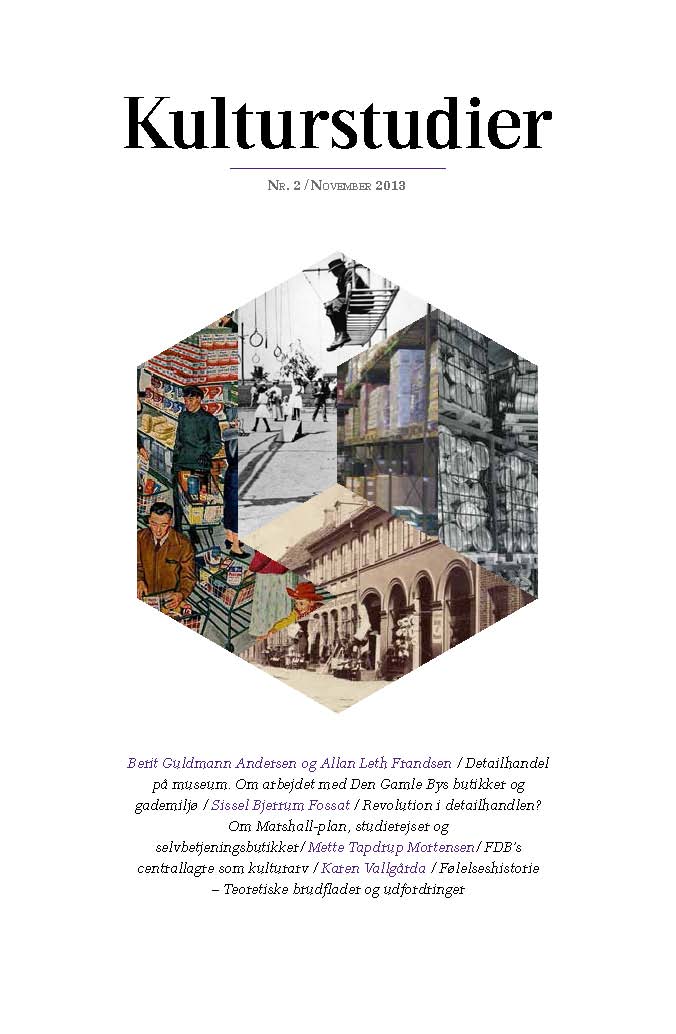Detailhandel på museum. Om arbejdet med Den Gamle Bys butikker og gademiljø.
DOI:
https://doi.org/10.7146/ks.v4i2.15518Resumé
I 2002 besluttede Den Gamle By at fortælle 1900-tallets Danmarkshistorie ved at udvide museet med to nye bykvarterer – et 1927-kvarter og et 1974-kvarter. Indtil da havde museet i al væsentlighed arbejdet med 16-, 17- og 1800-tallets historie, og der forestod (og forestår) derfor et stort arbejde med vidensopsamling og -generering i form af forskning og undersøgelser om den moderne bys udseende. Da detailhandelen er en meget synlig nyskabelse i den moderne by i forhold til de perioder, museet allerede præsenterer, var behovet for viden på ikke mindst dette område af stor betydning. I artiklen giver vi et overblik over 1900-tallets butiksudvikling i Danmark, og vi gør rede for de undersøgelser, der er gået forud for etableringen af butikkerne i Den Gamle Bys nye bykvarterer.
Abstract
In connection with the development of two new town districts – for 1927 and 1974 respectively – at the open-air museum, Den Gamle By (”The Old Town”) in Århus, its staff undertook a number of studies, one of which concerned the history of retail trade in Denmark.
Retail trade is an important factor in the formation of the modern urban streetscape. Urbanisation and industrialisation prompted an increase in shops from the mid-19th century onwards. By the end of World War 1, retailing had developed from merchant’s houses offering a wide assortment of goods, to strictly specialised shops.
In tandem with this development, the visual appearance of the shops in the streetscape changed: from being next to invisible, marked only by a discrete sign on the wall around 1850, to the almost obtrusively large window sections, glossy advertisements and rich illumination of the interwar shop fronts.
The retail trade continued to develop significantly in the 20th century: from relatively small establishments of independent grocers, greengrocers, butchers and bakers to large supermarkets offering all such goods under one roof. Consequently, food shops were largely replaced by service enterprises. From the 1960s onwards, the pedestrian streets in the city centres, as well as the assemblages of large supermarkets and other businesses on the outskirts, came to characterise the larger cities.
Downloads
Publiceret
Citation/Eksport
Nummer
Sektion
Licens
Tidsskriftet forbeholder sig ret til førsteudgivelsen, mens ophavsretten til artiklen tilfalder forfatteren.
Artikler udgivet af Kulturstudier licenseret under en Creative Commons Navngivelse-IkkeKommerciel-IngenBearbejdelse 4.0 International Licens





